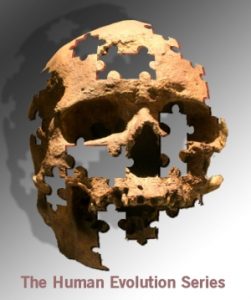
A team of scientists are now suggesting that the Denisovans, an ancient human species that lived concurrent with Neanderthals and early modern humans, may have successfully crossed Wallaces Line, one of the world’s largest biogeographic marine barriers in Indonesia, subsequently interbreeding with early modern humans who were on their way to Australia and New Guinea.
In 2010, a small bone fragment of a finger bone was discovered in Denisova cave in the Altai Mountains of Asia. Later genetic analysis indicated that it belonged to a heretofore unknown ancient human species, named Denisovans, and that their DNA is still present in native populations of Australia, New Guinea and surrounding regions. There is a distinct, and puzzling, absence of the DNA in Asian populations.
Now, as published in a Science opinion article, Alan Cooper of the University of Adelaide in Australia and Chris Stringer of the Natural History Museum in the UK are suggesting that the DNA presence could be the result of the Denisovans crossing over the deep oceanic marine barrier of Wallaces Line, a biogeographic gap that is so significant that it defines the division between European and Asian mammals on its west and marsupial-dominated Australasia on its east.
“In mainland Asia, neither ancient human specimens, nor geographically isolated modern indigenous populations have Denisovan DNA of any note, indicating that there has never been a genetic signal of Denisovan interbreeding in the area,” says Professor Cooper, Director of the University of Adelaide’s Australian Centre for Ancient DNA. “The only place where such a genetic signal exists appears to be in areas east of Wallace’s Line and that is where we think interbreeding took place — even though it means that the Denisovans must have somehow made that marine crossing.”
“The conclusions we’ve drawn are very important for our knowledge of early human evolution and culture,” says Stringer. “Knowing that the Denisovans spread beyond this significant sea barrier opens up all sorts of questions about the behaviours and capabilities of this group, and how far they could have spread.”
“The key questions now are where and when the ancestors of current humans, who were on their way to colonise New Guinea and Australia around 50,000 years ago, met and interacted with the Denisovans,” says Professor Cooper.
____________________________
Source: Adapted and edited from a University of Adelaid Press Release.
________________________________________________________________________________________________________________________
Read about the most fascinating discoveries with a premium subscription to Popular Archaeology Magazine. Find out what Popular Archaeology Magazine is all about. AND MORE:
 Popular Archaeology’s annual Discovery edition is a selection of the best stories published in Popular Archaeology Magazine in past issues, with an emphasis on some of the most significant, groundbreaking, or fascinating discoveries in the fields of archaeology and paleoanthropology and related fields. At least some of the articles have been updated or revised specifically for the Discovery edition. We can confidently say that there is no other single issue of an archaeology-related magazine, paper print or online, that contains as much major feature article content as this one. The latest issue, volume 2, has just been released. Go to the Discovery edition page for more information.
Popular Archaeology’s annual Discovery edition is a selection of the best stories published in Popular Archaeology Magazine in past issues, with an emphasis on some of the most significant, groundbreaking, or fascinating discoveries in the fields of archaeology and paleoanthropology and related fields. At least some of the articles have been updated or revised specifically for the Discovery edition. We can confidently say that there is no other single issue of an archaeology-related magazine, paper print or online, that contains as much major feature article content as this one. The latest issue, volume 2, has just been released. Go to the Discovery edition page for more information.
Subscription Price: A very affordable $5.75 for those who are not already premium subscribers of Popular Archaeology Magazine (It is FREE for premium subscribers to Popular Archaeology). Premium subscribers should email [email protected] and request the special coupon code. Or, for the e-Book version, it can be purchased for only $3.99 at Amazon.com.





